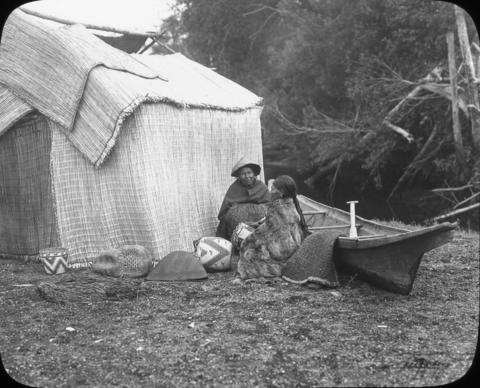Identity elements
Reference code
Name and location of repository
Level of description
Item
Title
Curtis AC-026
Date(s)
- 1912 (Creation)
Extent
Content and structure elements
Scope and content
ca. 1912. A mat shelter - Skokomish. Photograph by Edward S. Curtis. Scanned from Asahel Curtis lantern slide. Original photograph published in "The North American Indian, v.9" Plate appears between pp. 110 -111. The aboriginal name for the people occupying the region of Hood Canal on the Olympic Peninsula was the Twana. The largest community in this tribe was the Skokomish, the "Big River People." The Skokomish Reservation was created by the Point-No-Point treaty in 1855 and it encompasses almost 5,000 acres on the delta of the Skokomish River. During the winter months, the people resided in cedar plank houses. But during the other seasons, they resided in temporary, movable structures such as the one pictured, which they covered with woven mats. These structures could be moved from place to place during hunting and fishing seasons. The mats, hung on the framework of the structure, would keep out the wind and the rain. The mats were most commonly woven of cattail leaves or the inner bark of the cedar. Two women are picture outside of a structure, along with their canoe and woven baskets.
Indians of North America--Skokomish--1910-1920; Women--Indians of North America; Huts; Indians of North America--Shelters; Canoes; Baskets;

